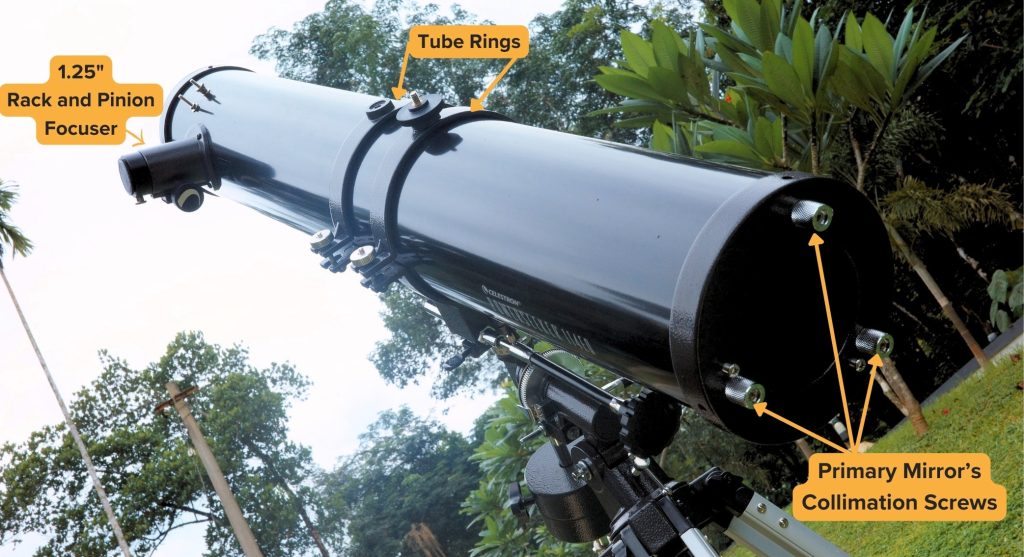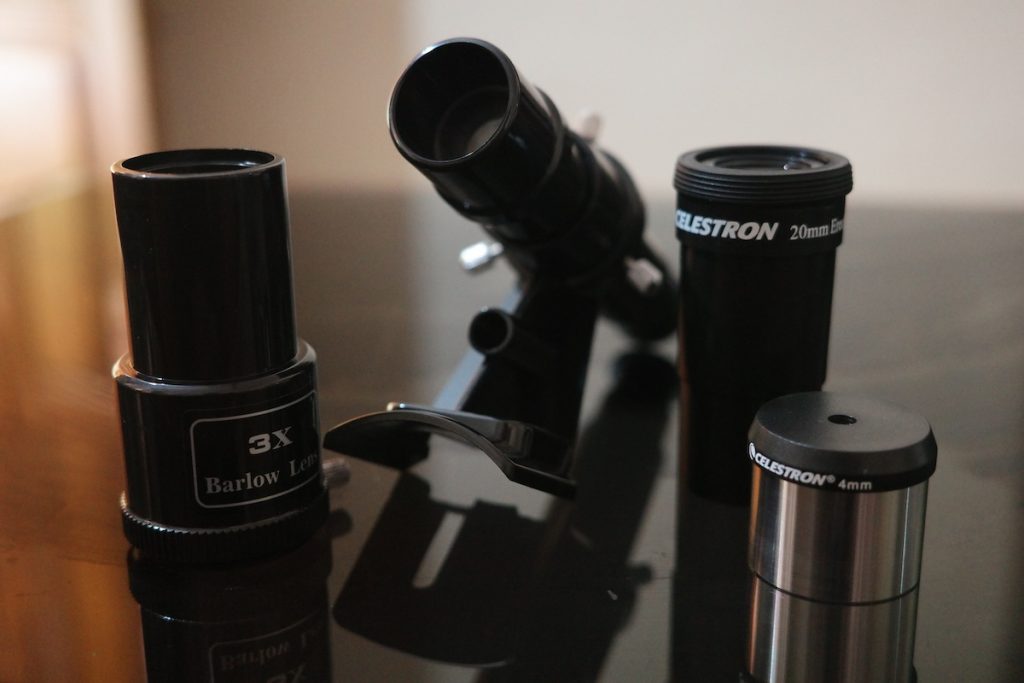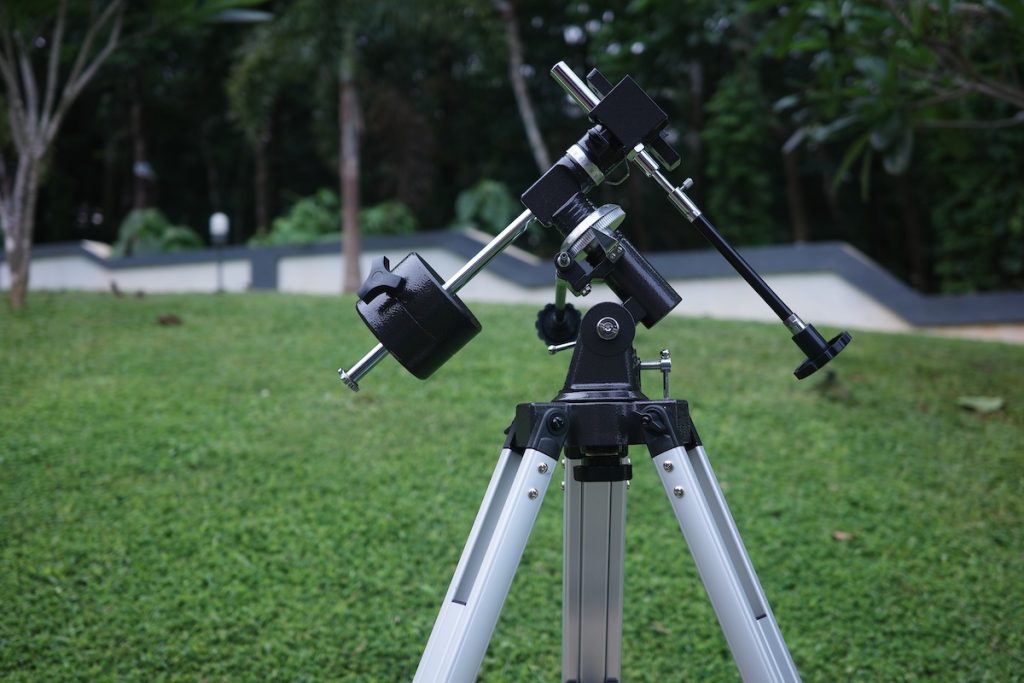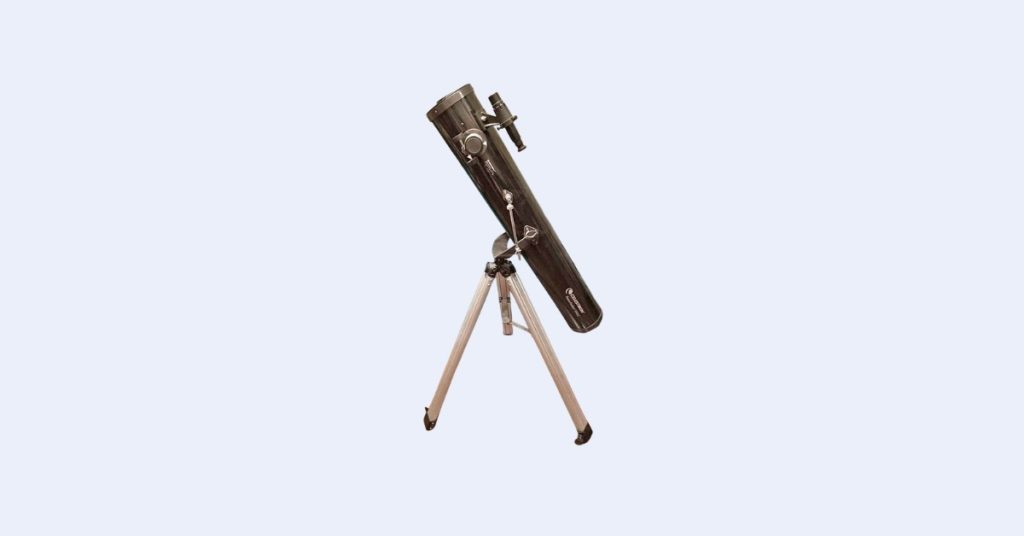Primary Optics: Spherical, But Still Great
The Celestron PowerSeeker 114EQ is a standard 114mm f/8 Newtonian with a spherical primary mirror, not the superior parabolic mirror. But at this aperture and focal length, a spherical mirror provides images that are well within the tolerances of a typical parabolic mirror while being extremely easy and cheap to manufacture.
These scopes have been around for decades. When used with quality eyepieces, they provide great images with little in the way of the coma that plagues faster focal ratio telescopes.
I used an identical 114mm f/8 (an older Celestron, made in the same factory on the same assembly line but on a steadier mount) to watch the 2016 transit of Mercury with a solar filter. It performed admirably. I’ve also briefly owned another one and was able to resolve some very tiny craterlets inside the lunar crater Clavius.

Thanks to the long focal ratio of the telescope, collimating it is quite easy, if not bordering on trivial.
The Bad Set of Accessories
The accessories included with the Celestron PowerSeeker 114EQ are, like all PowerSeeker accessories, atrocious. I’m warning you: not one of these has anything resembling quality.

The included 20mm eyepiece, providing 45x with the Celestron PowerSeeker 114EQ, is supposedly a Kellner. But it has an erecting prism in it to flip the image right-side up so that we can view birds with this massive and wobbly Newtonian reflector on an equatorial mount. I see that this is actually why Celestron includes it—to market it as usable for terrestrial applications. As a side effect, this prism massively reduces sharpness, sucks up a good portion of the light entering the eyepiece, and reduces the apparent field of view to around 30 degrees, which makes using it feel like I’m looking through a soda straw.
The PowerSeeker 4mm Ramsden eyepiece also has the soda straw experience, with the bonus of providing too much magnification to be actually useful (225x) and also requiring jamming my eyeball up to the tiny lens to see anything through it (which isn’t much, trust me).
The 3x Barlow included with all PowerSeeker telescopes is made out of plastic, completely useless, and exists purely so that Celestron can advertise the telescopes as capable of over 600x magnification. It serves as a purely marketing bogus. No telescope is capable of such high magnification powers on a consistent basis, especially not a small and wobbly beginner instrument. You can use it as a spare lens cap or throw it in the garbage, like I did.
Lastly, the PowerSeekers come with a plastic 5×24 finderscope to aim the telescope. Not only does this finder have poor optics and a slide-tube focusing mechanism that is almost impossible to adjust correctly, but it doesn’t fit in the bracket well and basically doesn’t ever stay aligned with the telescope. You would be best off unscrewing the lenses from the finder and sighting through the empty tube. Seriously.
The Shaky EQ1 Mount
The EQ1 isn’t actually terrible. The EQ1 is made out of a mix of aluminium and plastic and does just fine holding a small telescope or a DSLR and lens.

However, the 114EQ optical tube is not exactly small and therefore the tube can’t be balanced properly on the mount.
Whenever I use it, I’m constantly fumbling with the telescope crashing into the mount, it moving on its own accord the instant I let go of it, or even literally toppling over to the ground.
Coupled with the insanely bad finderscope and the unusable eyepieces provided with the telescope, I’d advise you against having high hopes of seeing anything with this telescope. Getting it pointed at the Moon would be a massive success.
Should I buy a Used Celestron PowerSeeker 114EQ?
If you’re willing to do some DIY and find a PowerSeeker 114EQ for under £50 or so, you could build a Dobsonian mount for it, equip it with a good finder and eyepieces, and be rewarded with some surprisingly good views. Otherwise, don’t bother.
Alternative Recommendations
Pretty much any telescope with good optics, a stable mounting, and useful accessories would be an upgrade over the PowerSeeker line, but here are a few of our top picks in its price range:
- The Zhumell Z114 offers the same aperture as the 114EQ, but with a wider field of view, better eyepieces, and a rock-solid and easy-to-use tabletop Dobsonian mount to boot.
- For a bit less money, the Zhumell Z100 and Sky-Watcher Heritage 100P have a bit less aperture than the PowerSeeker 114EQ, but are a lot easier to use and have decent accessories provided.
Aftermarket Accessory Recommendations
Despite the expense, which could naturally be directed towards upgrading to a superior telescope, high-quality aftermarket eyepieces can be used with another telescope later on and will at least make the observational experience with your PowerSeeker 114EQ somewhat enjoyable, even with its unsteady mounting. The 114EQ’s provided 20mm erecting eyepiece is dreadful and entirely ruins any low-power viewing, where the telescope can still work well despite its instability. A good low-power eyepiece to replace it is a must. Our choice would be a 32mm Plossl (28x), which is far sharper than the 20mm erecting eyepiece and offers the widest practical field of view with the PowerSeeker 114EQ, making it ideal for observing deep-sky objects. A 15mm redline/goldline eyepiece (60x) should work fairly well, while the 9mm version (100x) is ideal for planetary viewing with the 114EQ but is unlikely to be fun thanks to the instability of the telescope’s undersized mount.


